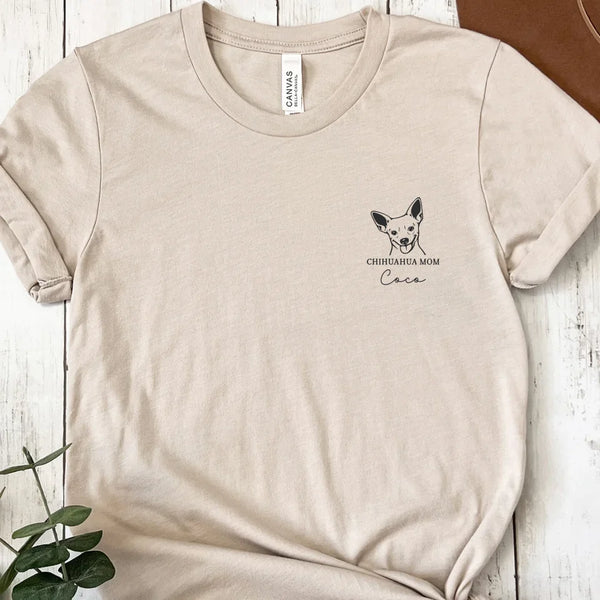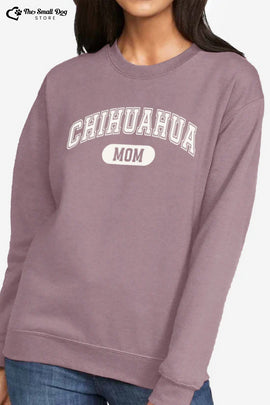Portion Control: How Much to Feed Your Chihuahua
Posted by ROBERTO BURALLI

As a Chihuahua owner, ensuring your furry friend receives the right nutrition is crucial for their overall health and well-being. Chihuahuas, known for their tiny frames and high metabolisms, have specific dietary requirements that vary based on age, activity level, and the type of food you're serving.
Proper portion control is key to preventing obesity and other health issues in these beloved companions. This article will explore the guidelines for feeding Chihuahuas at different life stages and share tips to avoid common mistakes.
Chihuahua Feeding Guidelines
Chihuahua puppies have higher caloric needs to support their rapid growth and development. Here's a breakdown of how much to feed them based on their age:
Chihuahua Puppy Feeding
- Under 3 months: 4-6 small meals per day, with 2-4 oz of food per meal
- 3-6 months: 3-4 meals per day, with 2-4 oz of food per meal
- 6-8 months: 3-4 meals per day, with 2-4 oz of food per meal
- Over 8 months: 2-3 meals per day, with 2-4 oz of food per meal
The total daily amount should be around 50 calories per pound of body weight for Chihuahua puppies.
Adult Chihuahua Feeding
Once your Chihuahua reaches adulthood (1-7 years old), their caloric needs decrease.
Adult Chihuahuas should be fed 2-3 meals per day, with a total of 1/2 to 1 1/3 cups of food per day, based on 35-40 calories per pound of body weight.
Senior Chihuahua Feeding
As your Chihuahua enters their golden years (8+ years old), their metabolism slows down, and their caloric needs drop further. Senior Chihuahuas should be fed 2 meals daily, with a total of 1/3 to 3/4 cup of high-quality senior dog food per day, with about 30 calories per pound of body weight.
Chihuahua Feeding Table
| Age | Feeding Schedule | Daily Food Amount |
|---|---|---|
| Under 3 months | 4-6 small meals per day | 2-4 oz of food per meal |
| 3-6 months | 3-4 meals per day | 2-4 oz of food per meal |
| 6-8 months | 3-4 meals per day | 2-4 oz of food per meal |
| Over 8 months | 2-3 meals per day | 2-4 oz of food per meal |
| Adult (1-7 years) | 2-3 meals per day | 1/2 to 1 1/3 cups of food per day |
| Senior (8+ years) | 2 meals per day | 1/3 to 3/4 cup of food per day |
Factors to Consider
- Activity level: More active Chihuahuas may require more calories, while less active ones may need fewer.
- Food type: Dry kibble is typically more calorie-dense than wet food, so portions may need to be adjusted accordingly.
- Calorie content: Always check the calorie content of the food you're feeding to ensure accurate portions.
- Weight monitoring: Regularly monitor your Chihuahua's weight and adjust their food intake to maintain a healthy body.

Common Mistakes to Avoid
When it comes to feeding a Chihuahua, there are several common mistakes to avoid to ensure your dog stays healthy and happy. Here are some of the most important ones:
Overfeeding
Overfeeding is a common mistake that can lead to obesity and a range of health problems in Chihuahuas. Monitoring your dog's weight and adjusting their food intake is essential. You should also avoid giving your dog too many treats, as these can add up quickly and contribute to weight gain.
Underfeeding
On the other hand, underfeeding can lead to malnutrition and a range of health issues. It's crucial to ensure your Chihuahua is getting the right amount of food for their age, size, and activity level.
Feeding the Wrong Amount of Micronutrients
Micronutrients like calcium and phosphorus are essential for your Chihuahua's bone health, while selenium is important for their immune system. Make sure you're providing the right balance of these nutrients in your dog's diet.
Feeding Spoiled Food
Spoiled dog food can contain harmful bacteria and parasites, which can cause digestive problems for your Chihuahua. Always check the expiration dates and make sure your dog's food is fresh and edible.
Not Adjusting Food Based on Life Stage
Chihuahuas have different nutritional needs at different stages of their life. For example, puppies require more calories than adult dogs. Make sure you're adjusting your dog's food intake based on their age and life stage.
Giving Too Many Table Scraps or Treats
While it's okay to give your Chihuahua the occasional treat, giving them too many table scraps or treats can lead to obesity and other health problems. Always research and avoid toxic foods, and stick to small amounts of healthy treats.
Free Feeding
Free feeding, where your dog has access to food all the time, can lead to overeating and obesity. Instead, consider meal feeding, where you provide your dog with a set amount of food at set times.
Not Monitoring Body Condition
Regularly monitoring your Chihuahua's body condition can help you identify any potential health issues early on. Look for signs of obesity or underweight, and adjust their food intake accordingly.
By avoiding these common mistakes, you can help ensure your Chihuahua stays healthy and happy throughout their life.

Signs of Nutritional Deficiency
If your Chihuahua is not getting enough nutrients, there are several signs you can look out for to identify the issue. Here are some common signs of nutritional deficiency in dogs:
- Itching and scratching
- Dry, flaky skin
- Lack of energy
- Changes in feces
- Depression
- Skin or coat disorders
- Excessive shedding
- Weight loss or inability to gain weight
- Bad breath or body odor
- Dull coat
- Increased allergies
- Suppressed immune system
- Poor digestion
- Stunted growth or bowed limbs
- Frequent infections
- Congestive heart failure
- Pancreatitis
- Kidney disease
If you notice any of these signs, consult with your veterinarian to determine the underlying cause and develop a treatment plan.
Transitioning to a New Diet
When switching to a new diet, it's essential to transition gradually to minimize digestive upset. Start by mixing a small amount of the new food with their current diet, and gradually increase the proportion of new food over 7-10 days.
Monitor your Chihuahua's response closely and adjust the pace as needed. Consult with your veterinarian for personalized advice, and be patient throughout the transition process.
Transitioning your Chihuahua to a new diet can be a gradual process to minimize digestive upset and ensure a smooth adjustment. Here's a step-by-step guide to help you transition your Chihuahua to a new diet:
Start by Mixing the New Food with the Old Food
Begin by mixing a small amount of the new food with their current diet. Start with a 25% new food to 75% old food ratio and gradually increase the proportion of new food over time.
Gradually Increase the Proportion of New Food
Over 7-10 days, gradually increase the proportion of new food in their meals. For example, you could start with 25% new food, then 50%, and finally 75% new food.
Monitor Your Chihuahua's Response
Watch your Chihuahua's behavior, appetite, and stool quality closely during the transition period. If they show signs of digestive upset, such as diarrhea or vomiting, slow down the transition process.
Introduce New Foods in Small Amounts
When introducing new foods, start with small amounts and gradually increase the serving size over time. This can help your Chihuahua adjust to the new flavors and textures.
Avoid Sudden Changes
Avoid making sudden changes to your Chihuahua's diet, as this can cause digestive upset. Instead, make gradual changes over days or weeks.
Keep the Old Food Available
Keep the old food available for a few days after the transition to ensure your Chihuahua can still access it if needed.
Consult with Your Veterinarian
If you're unsure about transitioning your Chihuahua to a new diet or if they have specific dietary needs, consult with your veterinarian for personalized advice.
Be Patient
Transitioning to a new diet can take time, so be patient and don't rush the process. If your Chihuahua shows signs of digestive upset, it's better to slow down the transition than to risk causing harm.
Reward Good Behavior
Positive reinforcement can go a long way in making the transition process smoother. Reward your Chihuahua with treats and praise when they exhibit good behavior during the transition period.
By following these steps, you can help your Chihuahua adjust to a new diet gradually and minimize the risk of digestive upset. Remember to always prioritize your Chihuahua's health and well-being during the transition process.

Hydration Needs
In addition to appropriate food portions, ensuring your Chihuahua stays well-hydrated is essential for their overall health. Dry dog food contains only around 20% moisture, so Chihuahuas on a dry diet will need to drink more water to stay properly hydrated.
The general guideline is that a dog should drink 40-60 ml of water per kg of body weight per day. For a typical Chihuahua weighing 1-3 kg, this translates to 40-180 ml (1.3-6 oz) of water per day.
Chihuahuas fed a raw diet, which contains around 70% moisture, may need less additional water intake to stay hydrated. However, factors like activity level, environment, and health conditions can affect a Chihuahua's daily water needs, so it's important to monitor their intake and adjust accordingly.
Ensuring your Chihuahua has access to clean, fresh water at all times and encouraging them to drink enough to stay properly hydrated is crucial. Consulting your veterinarian can also help determine the optimal water intake for your individual Chihuahua.
Identifying Dehydration
To determine if your Chihuahua is dehydrated, you can perform the following checks:
- Skin Elasticity Test: Gently pull up some of your Chihuahua's loose skin at the back of their neck or over the shoulder blades and release it. In a well-hydrated dog, the skin should instantly spring back to its original position. If the skin takes longer to fall back into place and appears tented above the neck or shoulders, it could indicate dehydration.
- Gum Test: Lift your Chihuahua's lips and press your finger on their gums. In a well-hydrated dog, the gums should be pink, moist, and glistening. If the gums are tacky or sticky, it could be a sign of dehydration.
- Watch for other signs: Loss of appetite, lethargy, reduced energy levels, panting, sunken dry-looking eyes, dry nose, thick saliva, and decreased urine output can also indicate dehydration in dogs.
- Capillary Refill Time: Press your finger gently against your Chihuahua's gums and then remove it. In a well-hydrated dog, the area where you pressed should return to its normal pink color almost immediately. If the capillary refill time is prolonged, it could suggest dehydration.
By observing these physical signs and behaviors in your Chihuahua, you can assess whether they may be dehydrated and take appropriate action to ensure they receive the necessary hydration and veterinary care if needed.
Related Post: Understanding Chihuahua Temperament and Personality: A Guide for Prospective Owners

Conclusion
Providing proper nutrition and hydration for your beloved Chihuahua is essential for their overall health, happiness, and longevity. By following the guidelines outlined in this article, you can ensure your furry companion receives the appropriate portion sizes and water intake for their specific age, activity level, and dietary needs.
Remember, every Chihuahua is unique, and their nutritional requirements may vary, so it's crucial to monitor their weight, body condition, and overall well-being regularly. Don't hesitate to consult with your veterinarian if you have any concerns or need personalized advice. With love, care, and a well-balanced diet, your Chihuahua can thrive and enjoy a fulfilling life by your side for years to come.
Embrace the responsibility of being a responsible pet owner, and your Chihuahua will undoubtedly repay you with unconditional loyalty and boundless affection.
SHARE:















